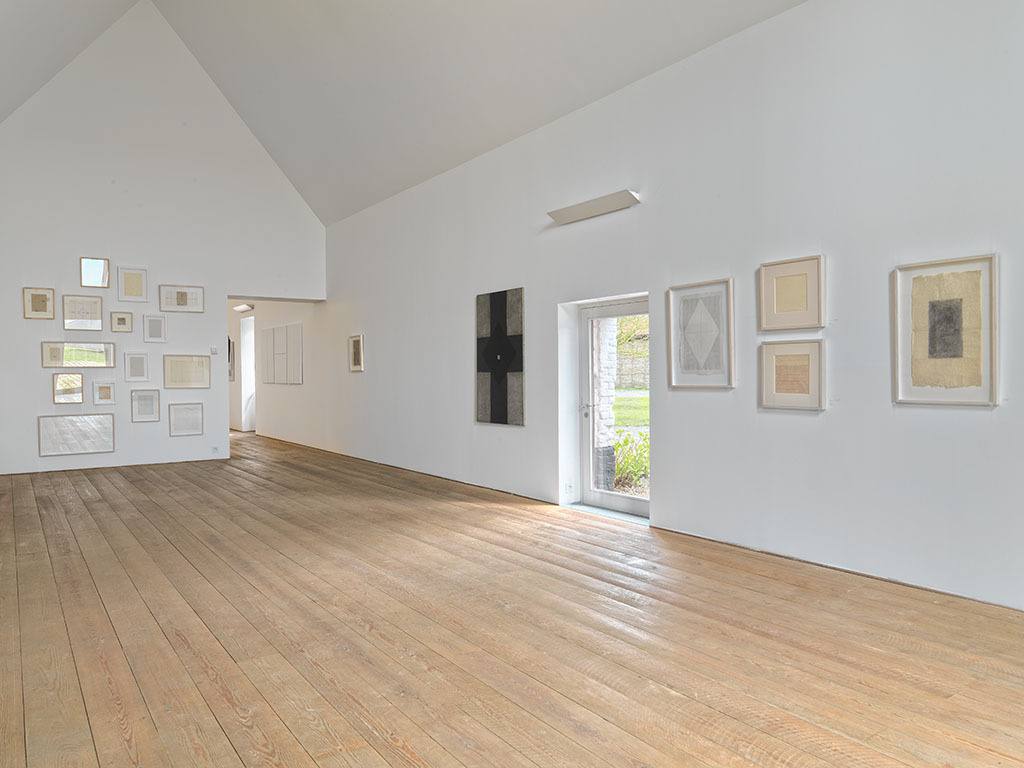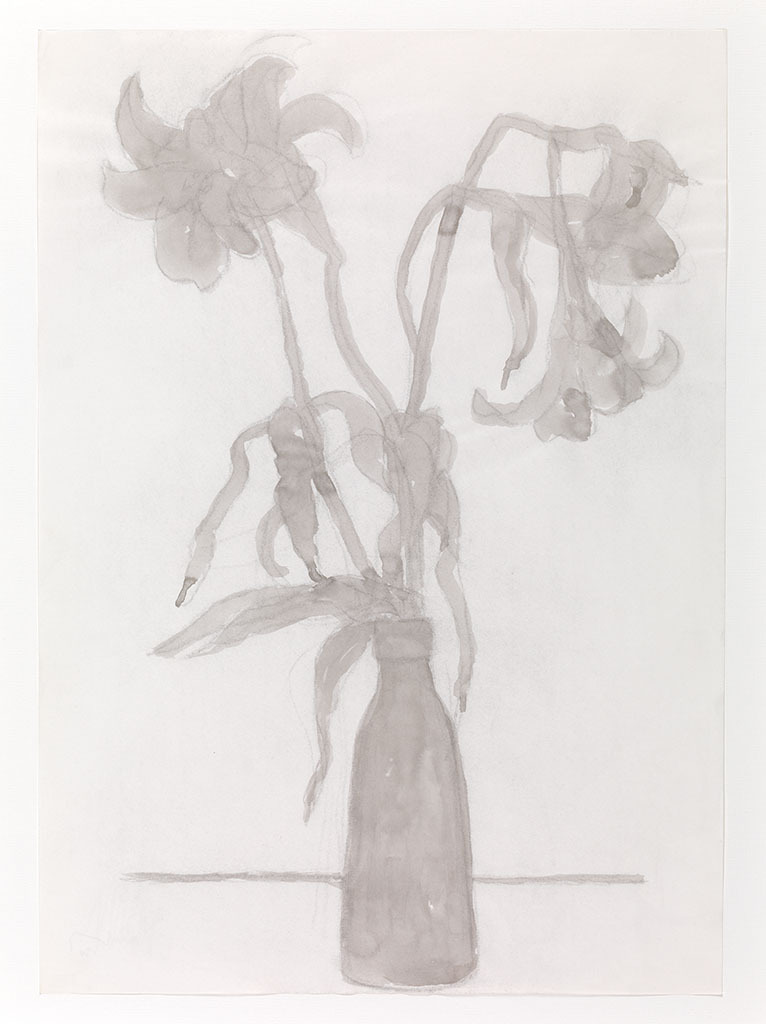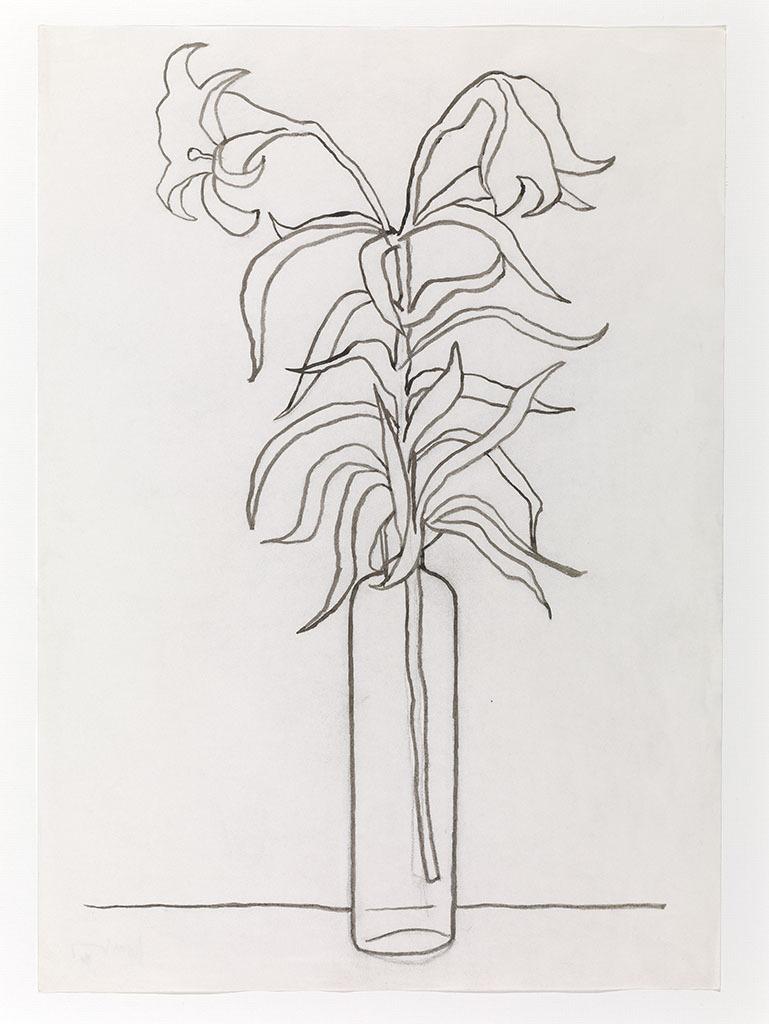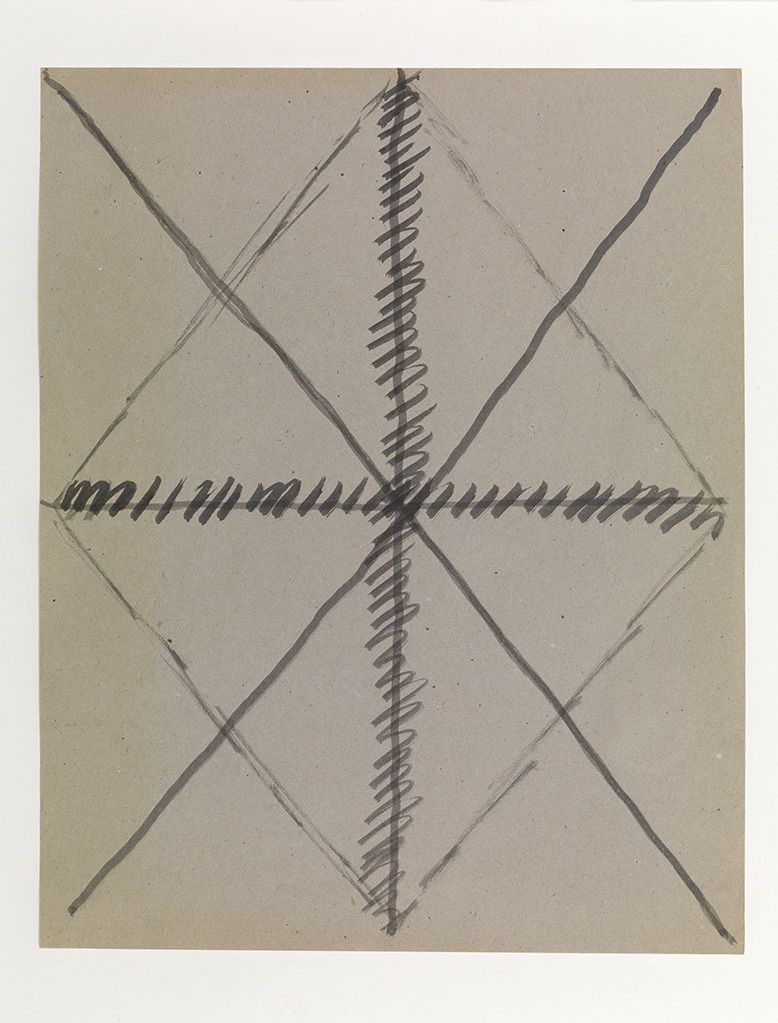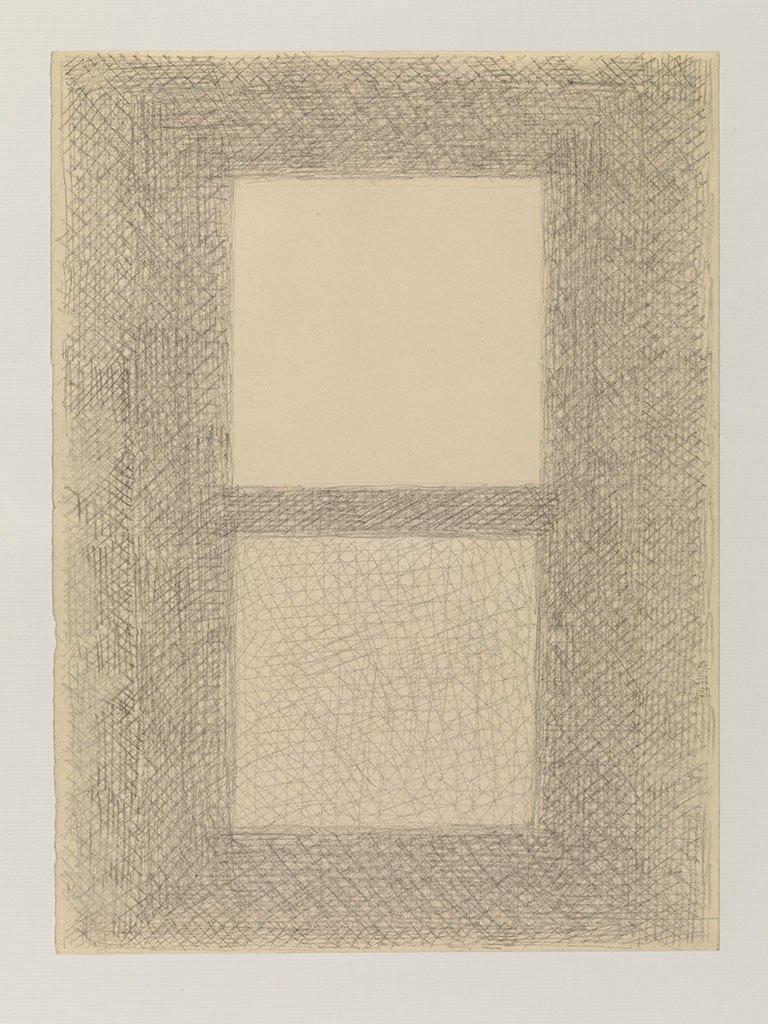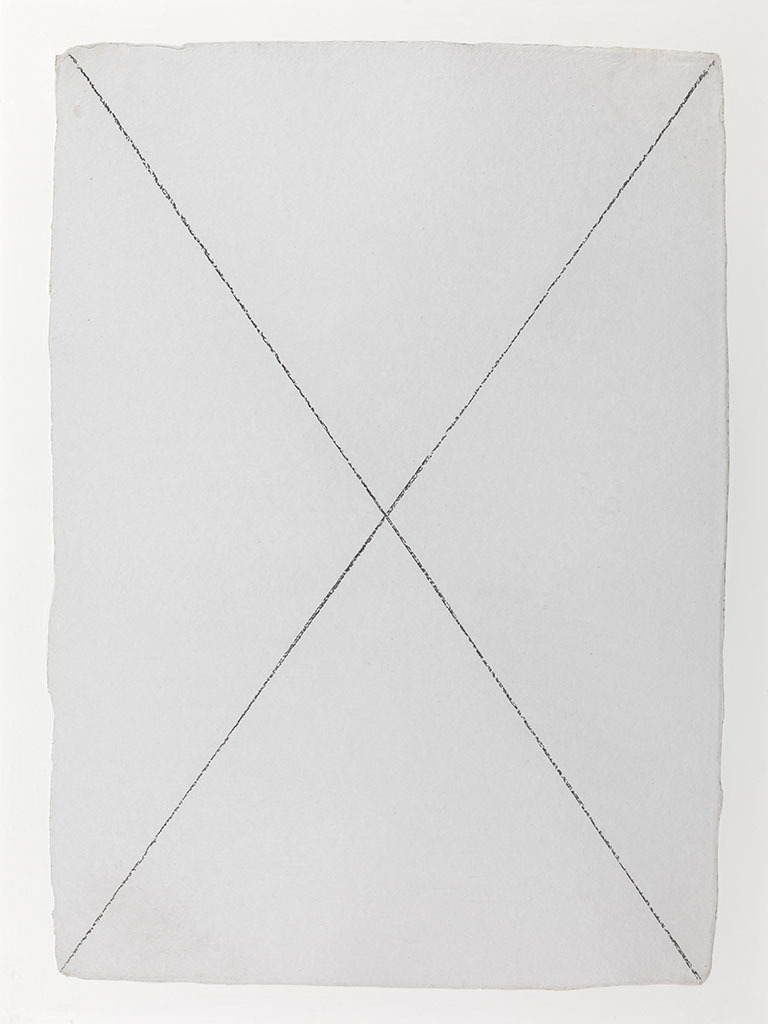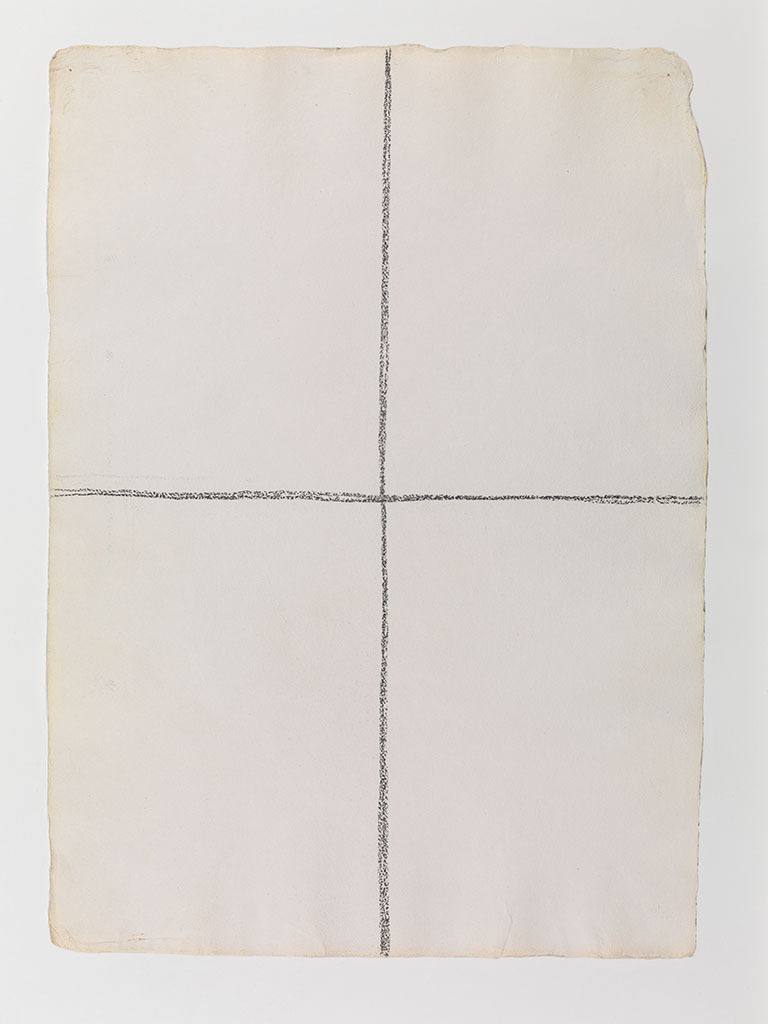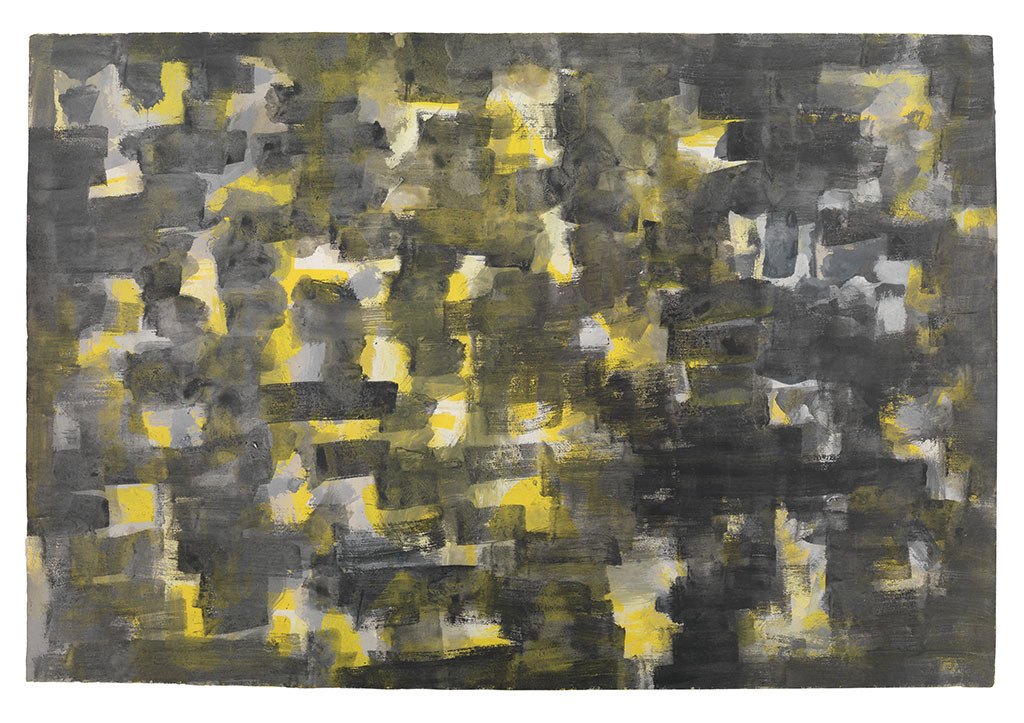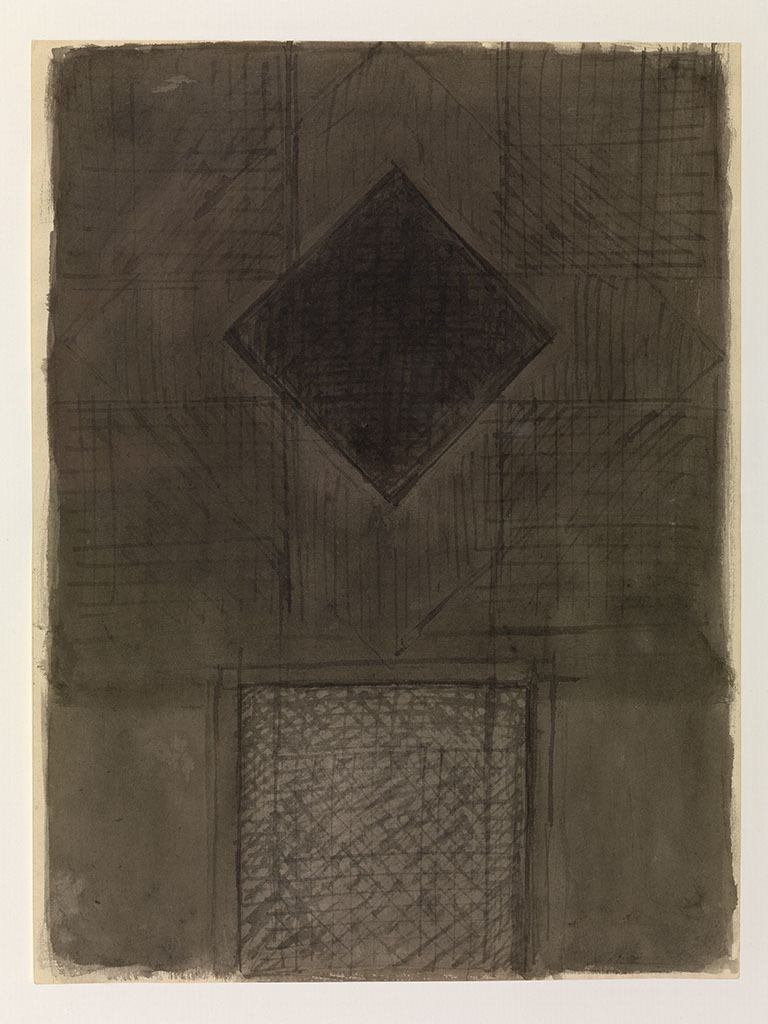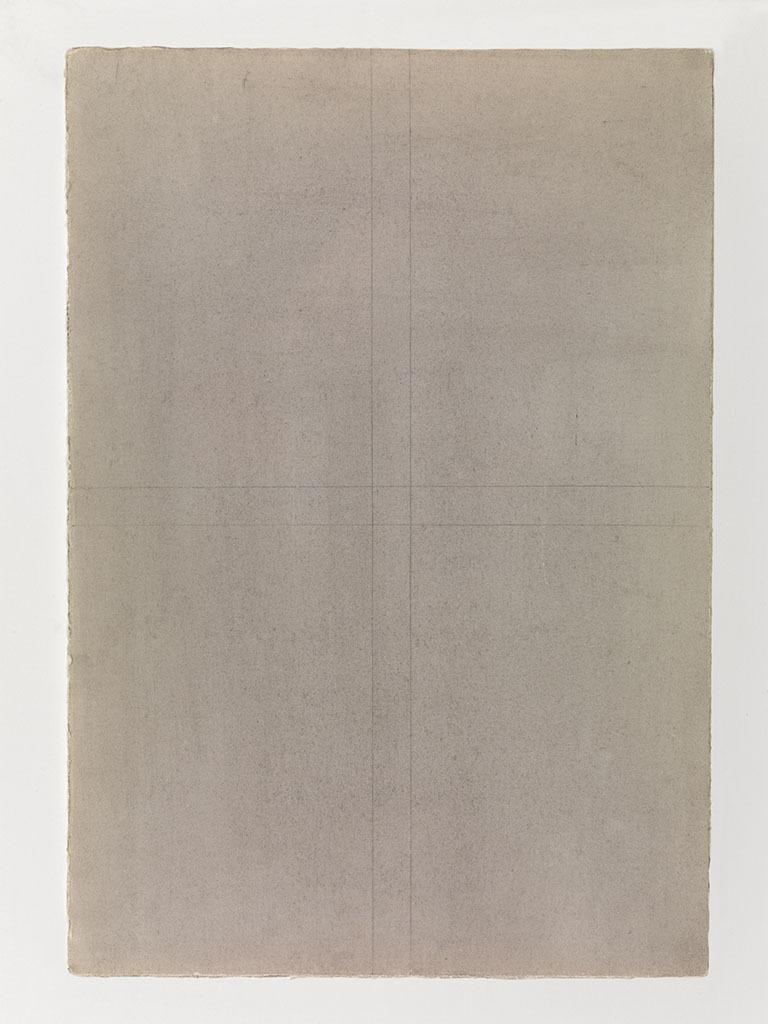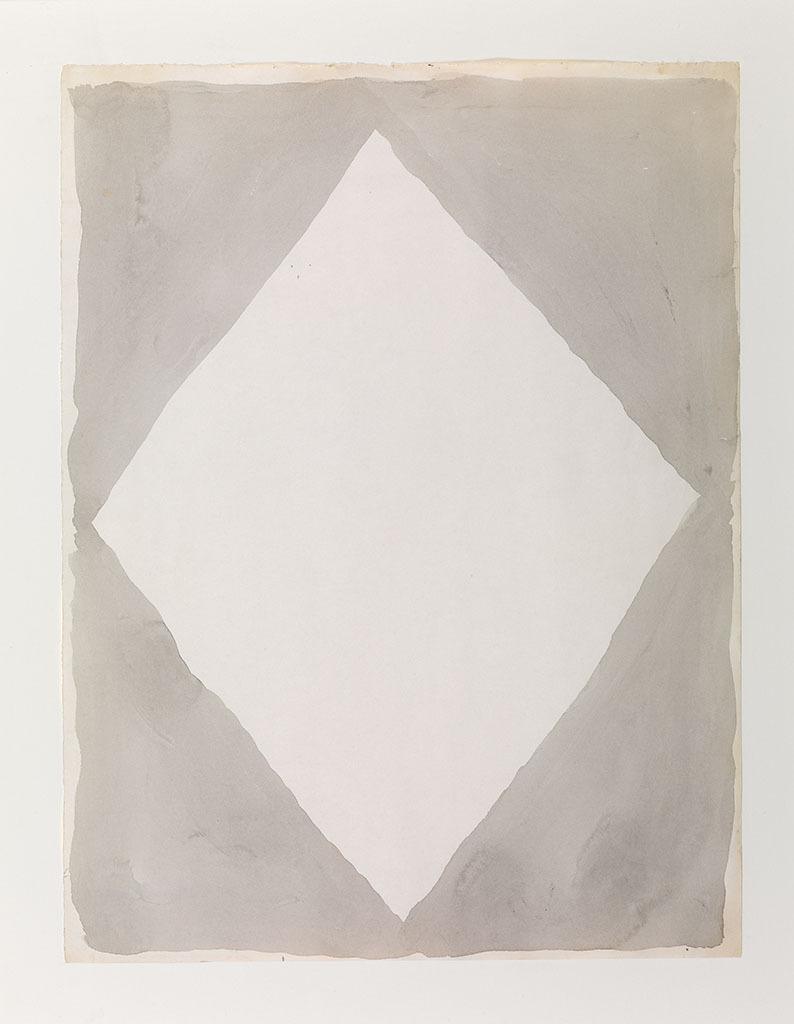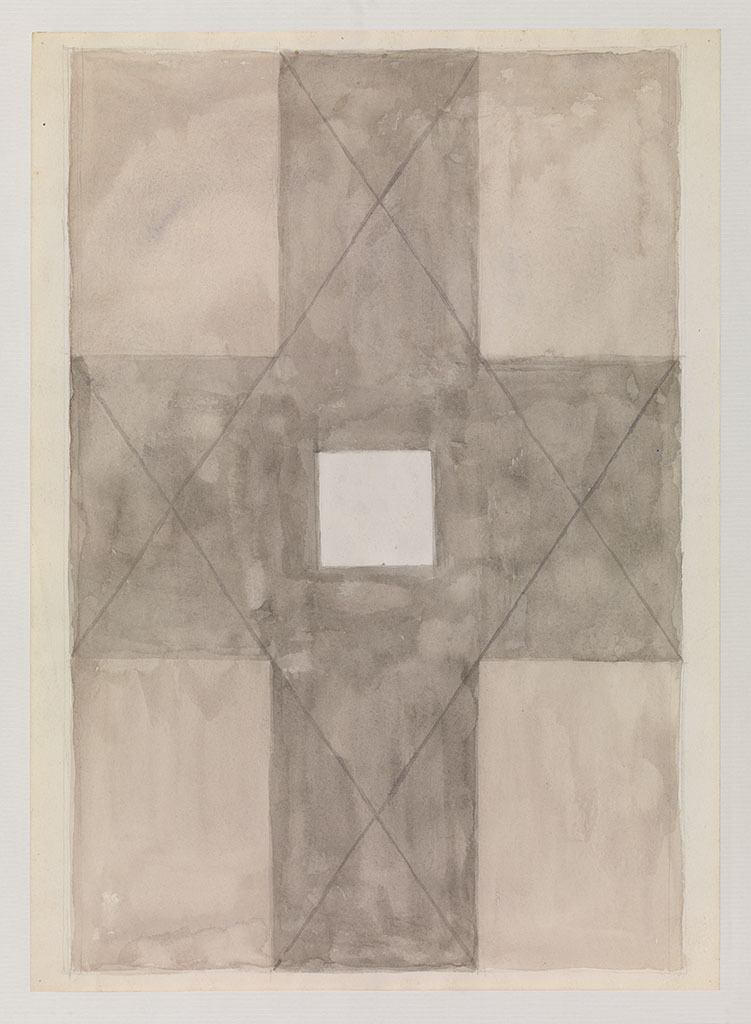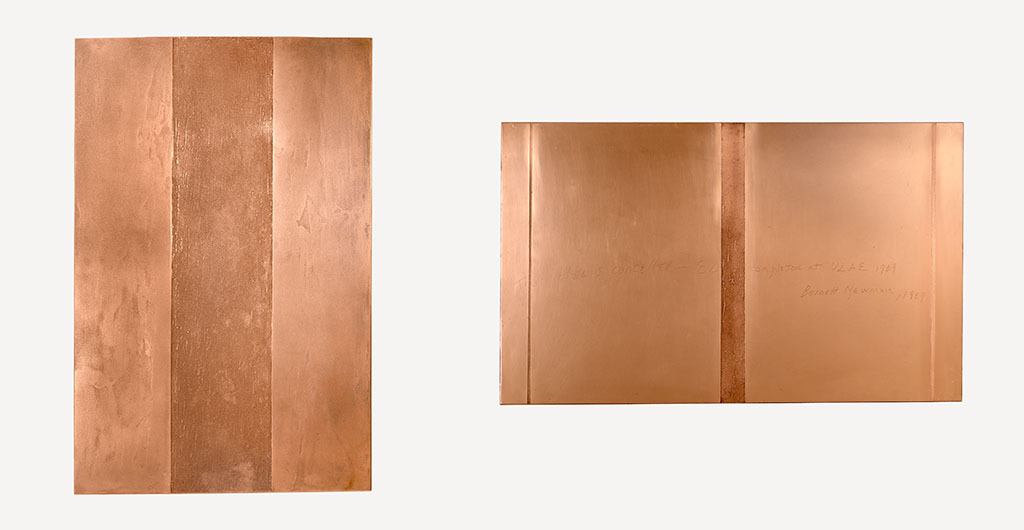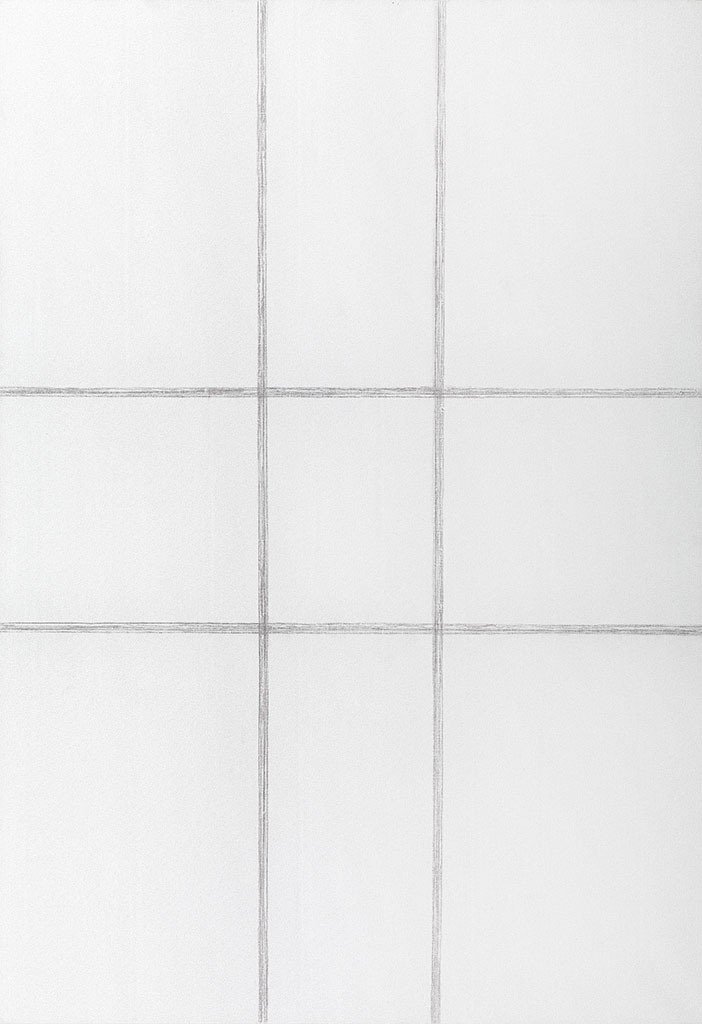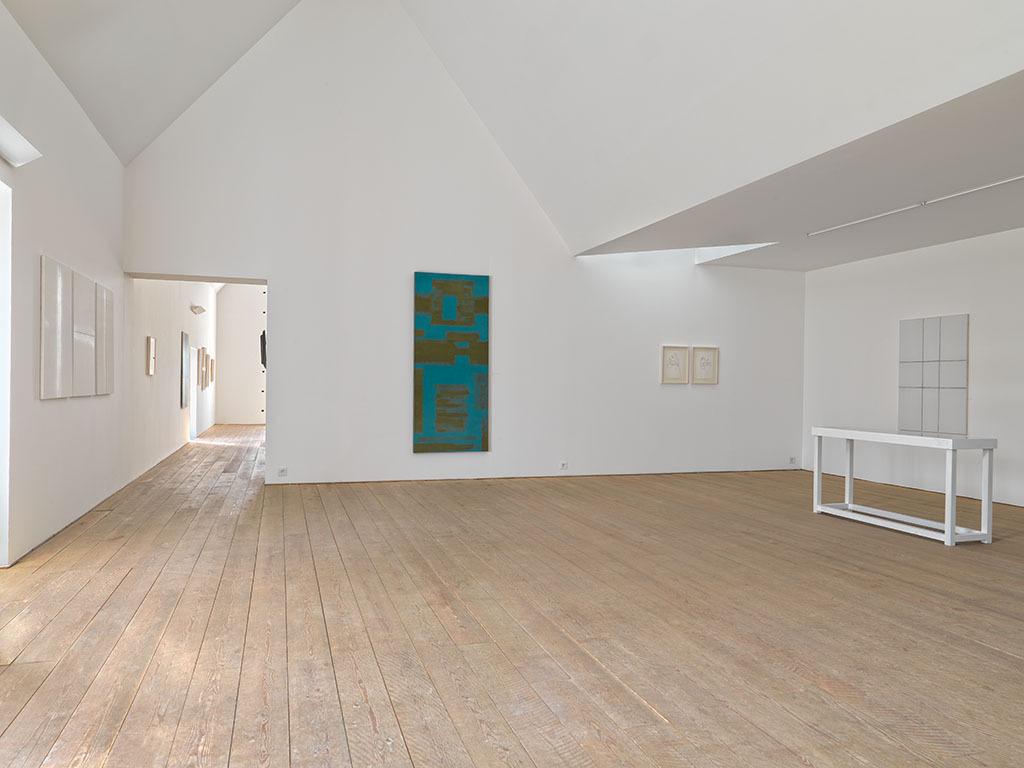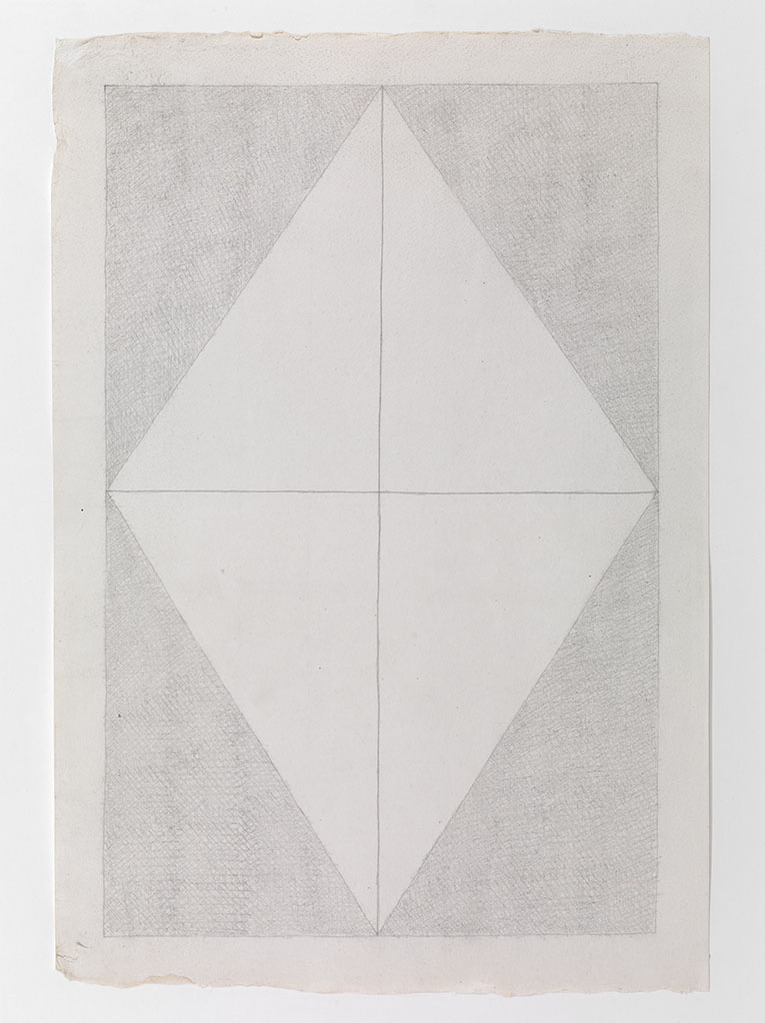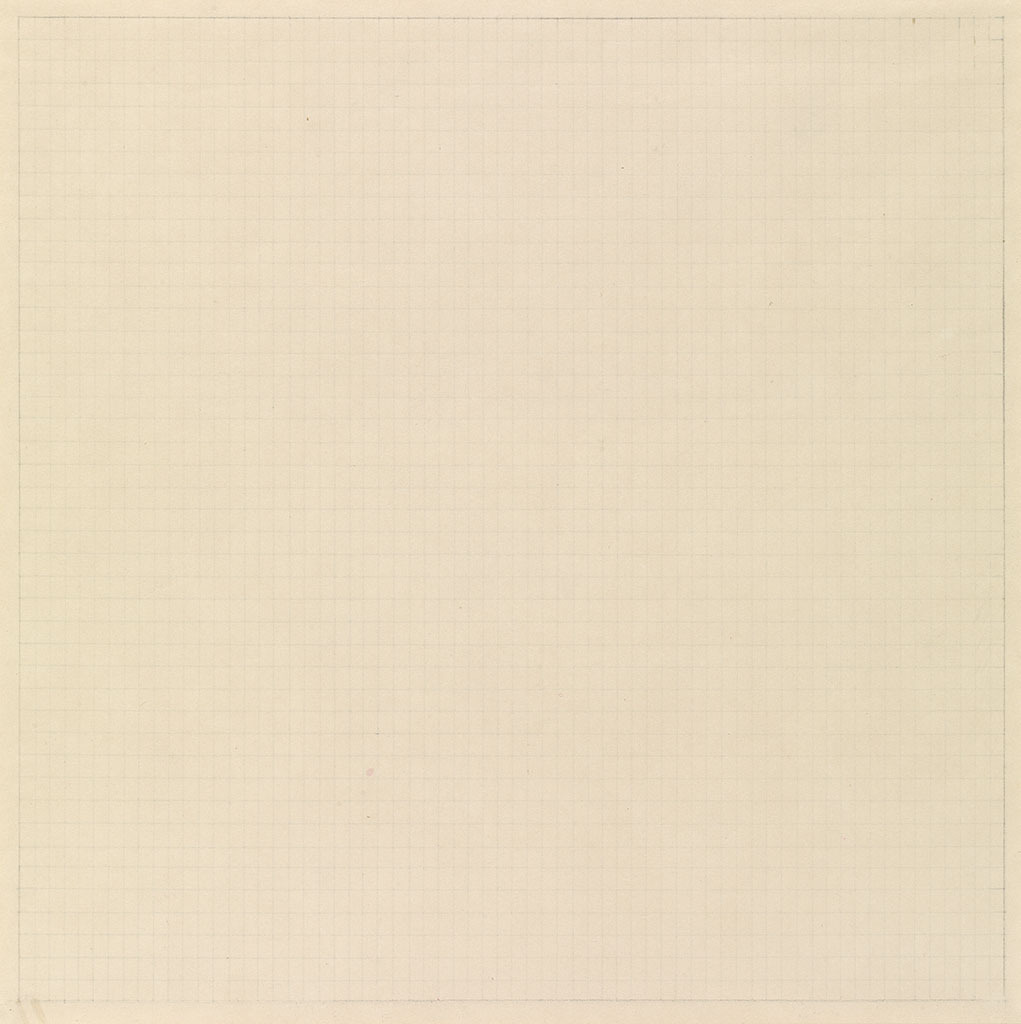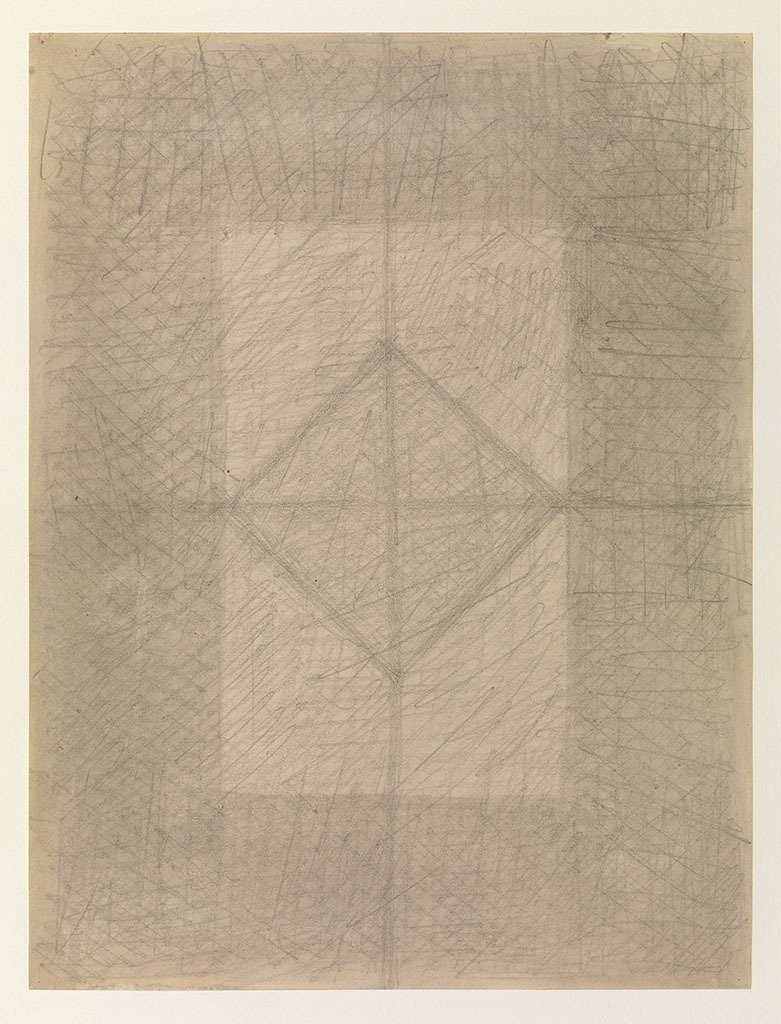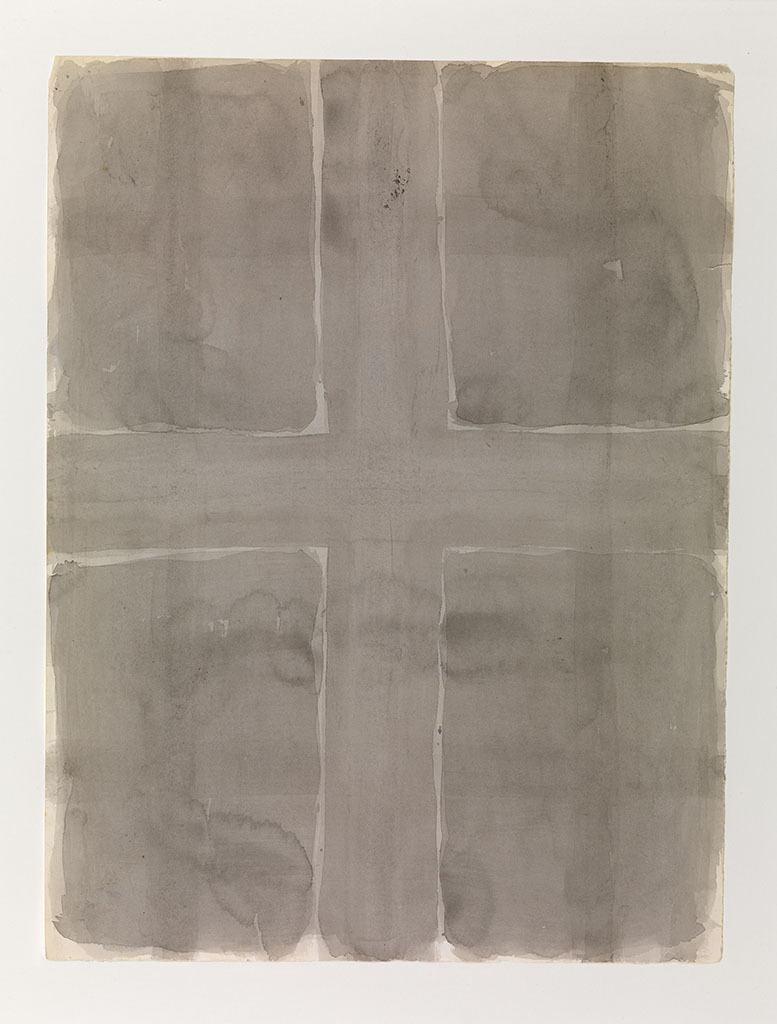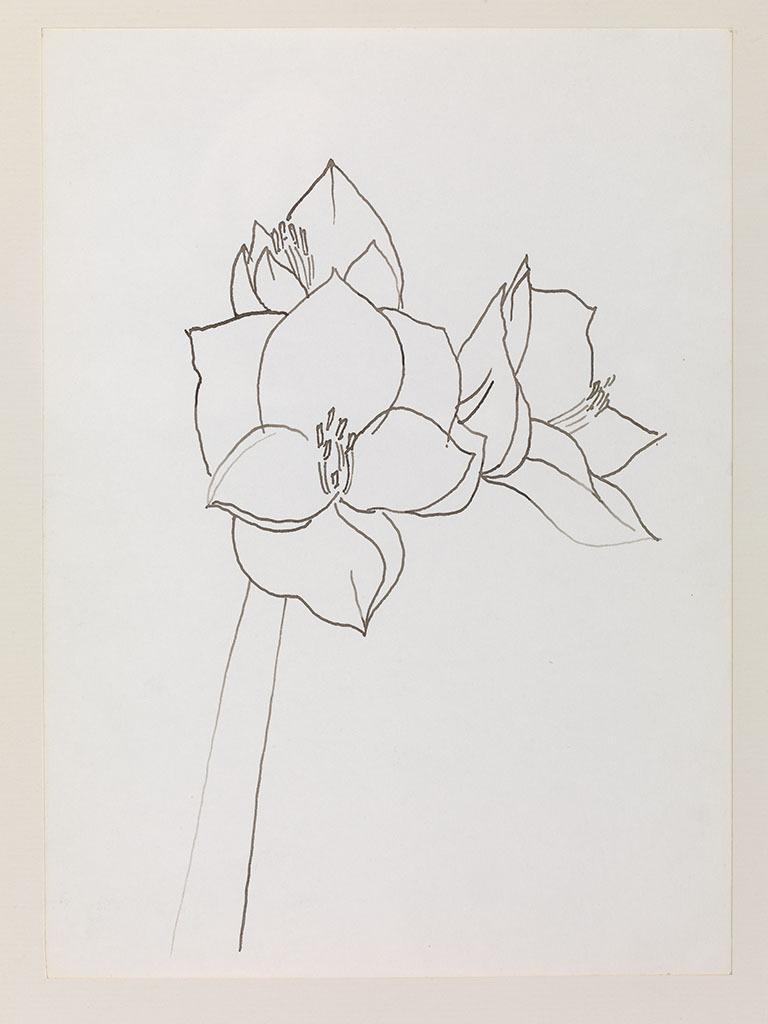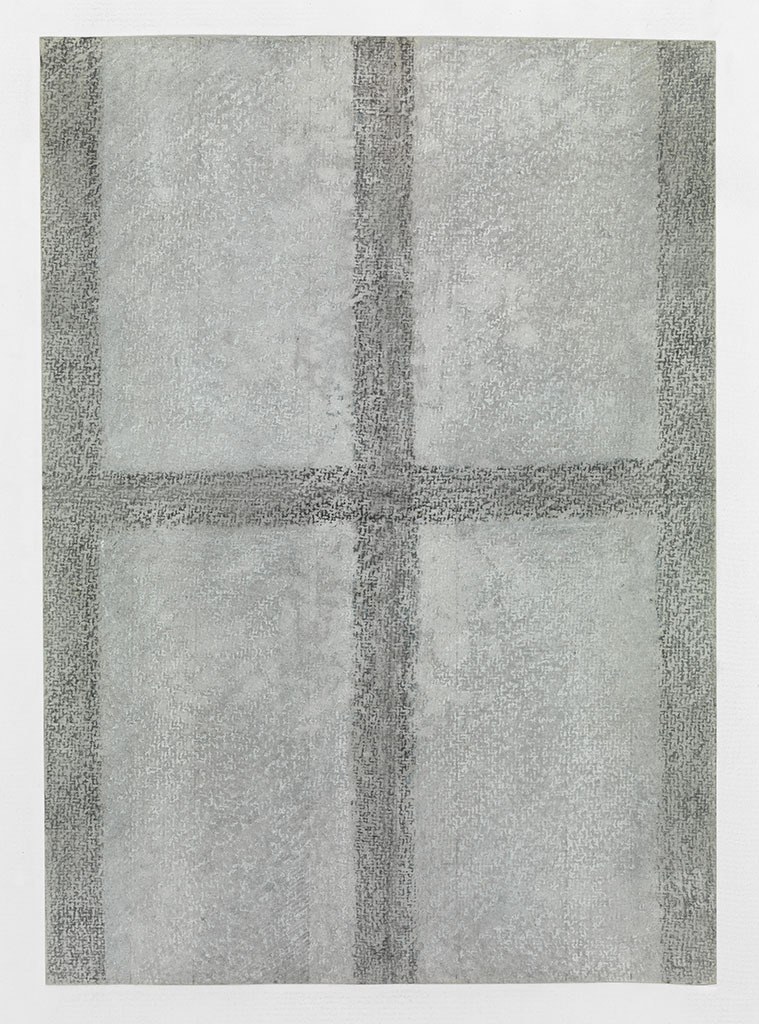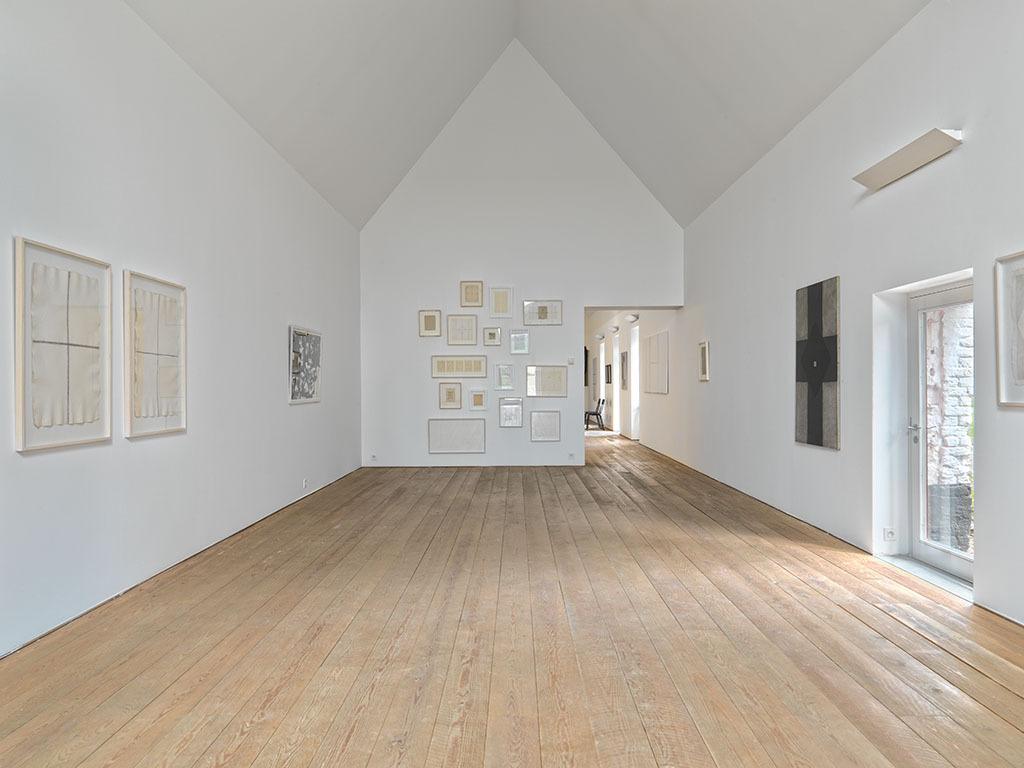Dan Van Severen
April 3 – July 9, 2011
Dan Van Severen
Art arises out of a want, out of a longing for the elusive. (Van Severen, 1994)
Since Dan Van Severen passed away in 2009, critics and art lovers unanimously agreed on the quality of his work. Van Severen left behind an oeuvre that is instantly recognizable in its deceiving simplicity. The line, square, circle and cross, geometric motifs that have marked Van Severen’s oeuvre since the sixties have evolved over time, but the essence of the work never changed. His art arose from the attempt to join the two extremities of his personality: on the one hand there is the Dionysian aspect, marked by his love of life and laughter, on the other hand the Apollonian search for an ideal, platonic form of beauty, calm and simplicity. At the merging of these binary opposites, the seemingly formalistic geometric forms arose and became the foremost essence of his work.At first glance, the work of Van Severen might belong to the abstract fundamentalist school of painting, but attempting to place his artistic attitude within this school is an external assessment of his vision. In fact, his formal and ascetic formalism conceals a deep romantic aspect. Dan Van Severen longs for the elusive, the universal and the absolute. He does not repress his own subjectivity, despite the reduction of the formal aspects of his work.
At first glance, the work of Van Severen might belong to the abstract fundamentalist school of painting, but attempting to place his artistic attitude within this school is an external assessment of his vision. In fact, his formal and ascetic formalism conceals a deep romantic aspect. Dan Van Severen longs for the elusive, the universal and the absolute. He does not repress his own subjectivity, despite the reduction of the formal aspects of his work.
Van Severen shares this enduring passion to search for an essential, ideal truth in art with contemporary minimalist artists Ad Reinhardt and Agnes Martin. Additionally, Van Severen was a great admirer of Brice Marden. His Suicide Notes (1972-73) in particular struck a chord with Van Severen, for their merging of minimalism with an organic fluidity.
To Dan Van Severen, fundamentalism is no solution concerning the autonomy of art; he accepts the intermediate function of his painting, and even aims at extra-artistic goals. The canvas then becomes a manifesto of the artistic individual for Van Severen, enabling him to create a means of communication that is less subject to confusion.
Leonardo already knew that the plastic language is much more synthetic than the literary language, as the latter evolves. One cannot read – and much less grasp – a poem at a glance. The two-dimensional work of art is synthetic. (Dan Van Severen)
As early as 1957, Dan Van Severen started to turn towards an “economical synthesis”. From this moment onwards, the artist modifies his means culminating in the rejection of the oil-painting technique and in the recognition of the autonomy of the vertical element, in the 70’s. In 1969, he made his last oil painting “particularly to get around its materials consequences”. He then used different materials such as tempera, ink and charcoal.
The Stations of the Cross (1981) is the provisional copingstone of the artist’s reductive evolution: a series of 14 parts, in each a horizontal line is intersected by a number of vertical lines. It stands as both answer and tribute to Barnett Newman’s eponymous paintings.
While Van Severen continued to reduce his artistic alphabet in his geometrical oeuvre, he never stopped drawing figuratively. From the Eighties onwards he exposed some of these figurative works on select occasions. It is remarkable that Van Severen’s flowers bear such a striking resemblance to Kelly Ellsworth’s.
This exhibition is an attempt at dialogue between Dan Van Severen and the abovementioned artists.
Biographies
Dan Van Severen (1927 – 2009, Belgium) was an abstract painter, sculptor and graphic artist. Van Severen studied at the Saint Luke institute in Ghent (1941-48) and the National Higher Institute for the Fine Arts in Antwerp (1951-54). He was a founding member of the artistic group G.58-Hessenhuis in Antwerp. His work is known for its radical simplicity with his usage of recurring geometric motifs: vertical and horizontal lines, circles, squares and crosses. The combination of these elements brings forward a metaphysical dimension, showing that Van Severen’s work goes beyond mere formalism.
Barnett Newman (1905 – 1970, New York) was the son of Jewish Polish immigrants. He studied at the Art Students League and City College. With Robert Motherwell and Mark Rothko, he cofounded the school called “Subject of the Artist” in 1948, which held open sessions and lectures for other artists. He developed a style of mystical abstraction and achieved his breakthrough with Onement I (1948), in which a single stripe of orange vertically bisects a field of dark red. This austerely geometric style became his trademark and had a great influence on artists as Ad Reinhardt and Frank Stella.
Ad Reinhardt (1913 – 1967, New York) studied art history under Meyer Schapiro at Columbia University, New York (1931-35) and studied painting with Carl Holty and Francis Criss at the American Artists School (1936-37). Reinhardt was a member of the American Abstract Artists (1937-47) and was part of the movement centered around the Betty Parsons Gallery that became known as Abstract Expressionism. He was also a founding member of the Artist’s Club. He wrote and lectured extensively on art and was a major influence on conceptual, minimal art and monochrome painting. Most famous for his “black” or “ultimate” paintings, he claimed to be painting the “last paintings” that anyone can paint. He believed in a philosophy of art he called “Art-as-Art” and used his writing and satirical cartoons to advocate for abstract art and against what he described as “the disreputable practices of artists-as-artists”.
Agnes Martin (1912, Canada – 2004, New Mexico) spent her youth in Vancouver. She moved to the United States in 1931 and became a US citizen in 1950. In 1954 she moved to Taos, New Mexico. Returning to New York in 1957, she held her first solo exhibition in 1958 at the Betty Parsons Gallery. Martin was a prominent exponent of geometric abstraction. A gray grid of intersecting penciled lines became the ultimate geometric composition for her. Martin’s gridlike abstractions were also noted for their light-soaked appearance and quiet effect. In the 1970s she produced printed equivalents of her paintings; a notable series of silkscreens, On a Clear Day (1973), was produced after her mathematically annotated sketches. Martin was one of the leading practitioners of Abstract Expressionism in the 20th century.
Ellsworth Kelly (°1923, New York) studied at the Pratt Institute in Brooklyn (1941-43). After serving military duty (1942-45) he studied at the School of the Museum of Fine Arts in Boston (1946-47). Kelly then left the U.S. to study at the Ecole des Beaux Arts in Paris, where he discovered Romanesque art and architecture, Byzantine art, Surrealism, and Neo-Plasticism. The automatic drawing of the surrealists led Kelly to experiment with the element of chance; Kelly was introduced to Jean Arp, and during this period he created shaped wood reliefs as well as collages incorporating this influence. From 1950 to 1951, Kelly taught at the American School in Paris. His work consisted of an abstraction of forms observed in the real world, and he soon developed a style of geometric abstraction using bright, primary colors. This style expanded and Kelly began to create works made up of multiple separate panels that recombined to produce many alternate compositions. During this time the artist met Constantin Brancusi, Francis Picabia, Alexander Calder and Georges Vantongerloo. Throughout his career, Kelly crossed the traditional boundaries between painting, sculpture, and architecture. With clarity of vision and a sense of optimism, Kelly utilized abstraction to create a broad and diverse body of work that combines and expands the issues of form, ground, color and space. He is currently showing at the Matthew Marks Gallery in New York.
Brice Marden (°1938, New York) earned his MFA from the Yale School of Art and Architecture (1963), where he studied with Alex Katz and John Schueler. Among his fellow students were the future artists Richard Serra, Chuck Close and Robert Mangold. It was at Yale that Marden developed the formal strategies that characterize his early monochromatic panels: a preoccupation with rectangular formats, and the repeated use of a muted, extremely individualized palette. Over the course of his career, Marden’s work has developed to reveal the range of influences he has absorbed during his travels throughout the world. His most recent work reincorporates landscape and the figure into abstract painting while reconnecting it with Abstract Expressionism and non-Western traditions. Marden lives and works in New York. He is represented by the Matthew Marks Gallery in New York.
